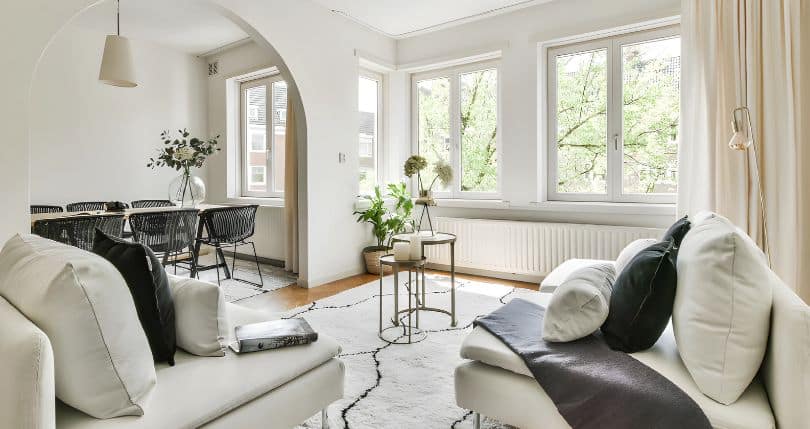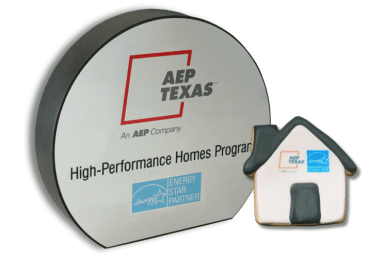Windows: They’re Part of Your Walls and Need Smart Insulation
Windows aren’t just there for a nice view or to let in light—they’re an important part of your home’s walls. And because it’s a bit tricky to insulate them, they can really affect how much you spend on heating or cooling your place. The size of your windows, how many you have, and where they are can all make your home more or less energy efficient. Let’s talk about some key things that can help you save energy with smart window design.
Go for Fewer, Smaller Windows
Big windows let in lots of light and give you great views, but they can also make your heating and cooling bills go up. You might want to think about having fewer windows or making them smaller. For example, if you cut down the glass area in your home from 20% to 10%, you could save as much as $500 a year on energy costs.
Pick Windows that Face North
The position of your windows is key to energy savings. West-facing windows can heat up your home a lot, which means higher air conditioning costs. North-facing windows, though, get less sun, so it’s smarter to have more windows on this side of your home. This could help you save around $ 90 annually on energy.
Shade Your Windows
Regular windows can let in too much heat, but you can reduce this by shading them. There are lots of choices like awnings, shutters, shades, or even trees and shrubs. Some shades can be set on timers or controlled from afar to keep your home cooler when the sun is strongest. Inside, things like heavy drapes or blinds can help keep your place cool, especially for those windows facing west. By using these ideas, you might save about $250 every year.
Choose the Right WindowFrames
Window frames are important because they can affect how quickly heat comes into your home. Here are some options:
- Aluminum frames are strong and easy to handle, but they usually let heat through quickly. If you live somewhere warm, like the Rio Grande Valley, look for aluminum frames with a thermal break to slow down heat transfer.
- Vinyl frames are low-maintenance and don’t let heat through as much as metal ones. For better energy saving, pick ones that have insulation inside.
- Wood frames are good at keeping heat out, but they need more upkeep. Wood can change shape with the weather, can be damaged by bugs or rot, and needs to be painted.
Invest in Energy-Saving Glass
The kind of glass you choose can also help you save energy. Here’s what to consider:
- Double panes are a must—they have two glass layers with a space in between, which can cut your heat gain and loss in half.
- Gas fills between the panes can boost insulation a lot.
- Tints and low-emissivity (low-e) coatings can stop some sun rays from getting through and lower heat loss without ruining your view.
Code Specifications for Windows
When talking about “code specifications” for windows, we’re referring to the building codes that specify how windows should be manufactured and installed in homes. These codes vary depending on where you live because different regions have different climates, weather patterns, and safety concerns. However, here is a general overview of the kinds of specifications codes might include:
- Energy Efficiency: Codes often require windows to meet certain energy performance criteria, which are measured by U-factor and Solar Heat Gain Coefficient (SHGC). The U-factor is the rate at which a window conductsnon-solar heat flow. The lower the U-factor, the more energy-efficient the window. SHGC measures how much heat from the sun is blocked. These standards are particularly important in codes for regions with extreme temperatures.
- Safety Glass: In areas where windows are subject to human impact (like next to doors or in showers), safety glass is required to prevent injuries in case the glass breaks. Safety glass typically includes tempered glass which is heat-treated to be stronger and to break into small, less dangerous pieces.
- Emergency Egress: Bedrooms and other sleeping areas must have windows large enough to serve as an escape or rescue route in case of an emergency like a fire. These specifications will include minimum opening sizes, heights, and widths.
- Glazing: Window glazing must often meet specific standards for durability and, in some areas, resistance to wind-borne debris or hurricanes.
- Installation: There are usually detailed requirements for how windows must be installed to ensure they’re waterproof and properly supported.
- Wind Load: In areas prone to high winds or hurricanes, windows must be able to withstand specific wind pressures. This often requires impact-resistant glass or protective shutters.
- Fire Rating: In areas with a higher risk of fire, there might be specifications for windows’ resistance to heat and flames.
- Size and Height: Codes may dictate the size of the windows in relation to the room size for light and ventilation, and the height of the window sill from the floor for safety.
To get the exact code specifications for your area, you would typically refer to your local building code, the International Residential Code (IRC), or the International Building Code (IBC) for commercial structures. For energy performance, the International Energy Conservation Code (IECC)is often referenced.
For specifics, you should check with your local building authority, as they’ll have the most up-to-date and relevant information for your region. If you are building or renovating in a particular area, it is crucial to consult with a local architect or building professional to ensure compliance with all applicable codes and regulations.
When you’re building a home, these are the kind of window tips that can help you keep costs down and make your home more comfortable.
See all BUILT TO SAVE® builders
Enjoy the peace of mind that your home was quality built.
© RGV New Homes Guide, 2024. Unauthorized use and/or duplication of this material without express and written permission from this site’s author and/or owner is strictly prohibited. Excerpts and links may be used, provided that full and clear credit is given to RGV New Homes Guide with appropriate and specific direction to the original content.





